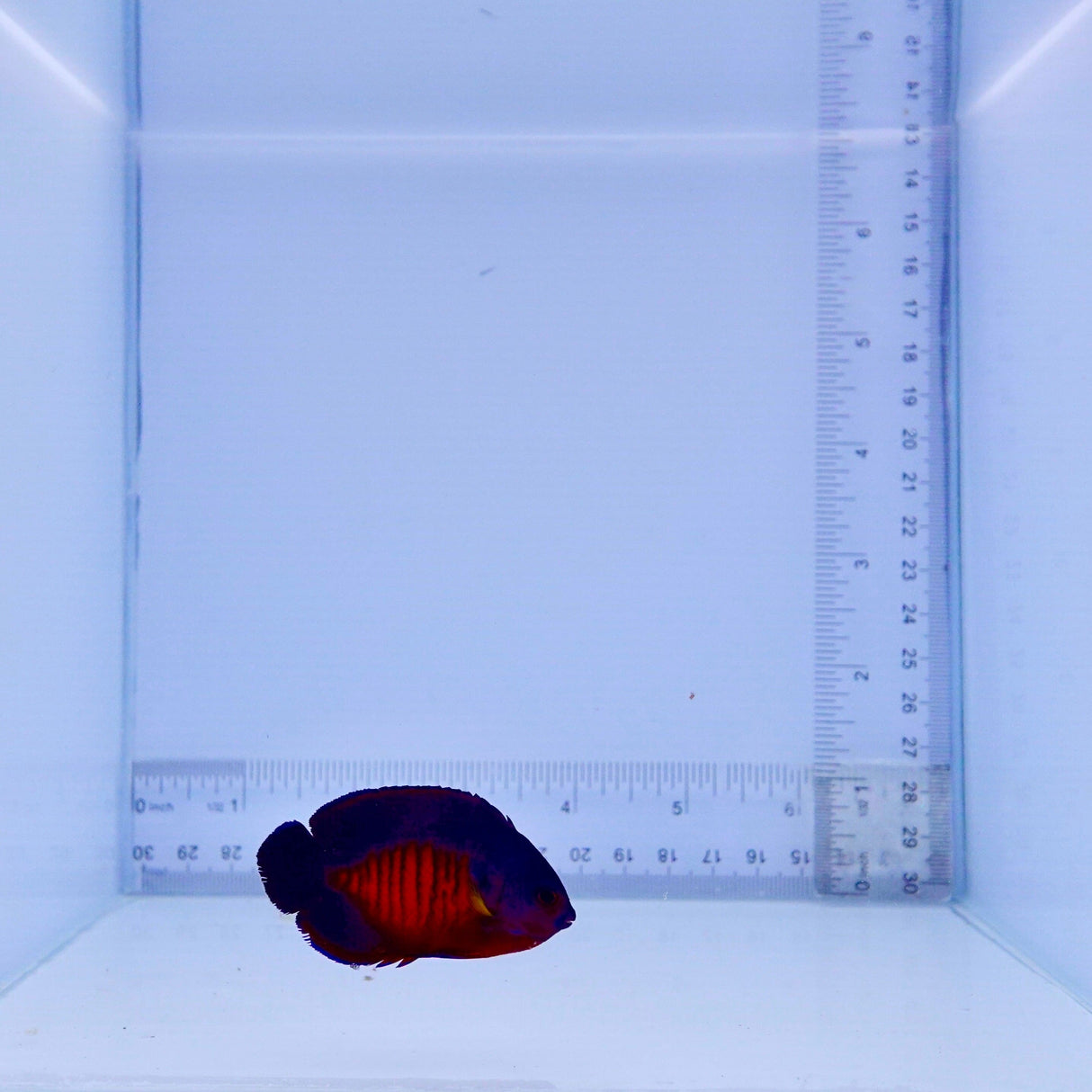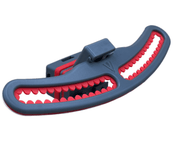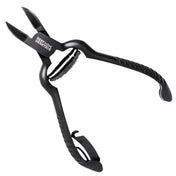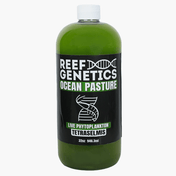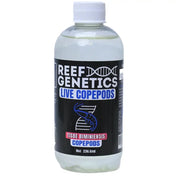ALMOST WYSIWYG – Approx. Size: 2-4 Inches
Coral Beauty Angelfish (Centropyge bispinosa)
The Coral Beauty Angelfish is a vibrant and hardy dwarf angelfish, beloved for its electric coloration and manageable size. With a body that ranges from deep royal blue to purple, accented by fiery orange or yellow swirls along the flanks, this species adds bold color and personality to any marine setup. Its adaptability and beauty make it one of the most popular dwarf angels in the hobby.
Tank Requirements
Coral Beauties do well in tanks of 55 gallons or more, with plenty of live rock for grazing and hiding. They prefer a mature, established system with stable water parameters and lots of nooks and crannies for retreat and exploration. While small in size, they are active swimmers and appreciate a well-structured aquascape.
Algae Grazers and Foragers
These angelfish are opportunistic omnivores, often seen picking at live rock in search of algae, detritus, and small invertebrates. Their foraging helps control film algae and contributes to a healthier live rock ecosystem, though they should not be relied upon as primary algae controllers.
Diet and Feeding
Coral Beauties require a varied omnivorous diet. Offer a mix of high-quality marine pellets, spirulina and algae-based flakes, and frozen foods such as mysis and brine shrimp. Regular feedings of dried seaweed or nori help support their natural grazing habits. Feed 2–3 times daily to maintain coloration and health.
Tankmates and Behavior
Typically semi-aggressive, Coral Beauties can coexist peacefully with most community fish, but may become territorial with other dwarf angelfish or similarly sized species. They are best kept singly unless in a large tank with careful introductions. In reef tanks, they are generally reef-safe with caution—most individuals leave corals alone, but some may nip at soft or fleshy corals, especially if underfed.
At Top Shelf Aquatics, we take pride in ensuring your order arrives safely and in perfect condition. Here’s everything you need to know about our shipping process:
Livestock Shipping Details
- Flat Rate Shipping:
- $39.99 Out of State
- $34.99 Florida (In-State)
- Orders over $299 ship FREE!
- NO FREE Shipping during Sale Events
- Shipping Days: The calendar during checkout determines when your livestock order will arrive. Normally we ship Monday - Thursday via FedEx Priority Overnight.
Orders placed by 2 PM EST Monday - Thursday ship the same day. Orders placed after 2 PM or on Fridays will ship the next business day. - Delivery Times: Most packages arrive by 10:30 AM EST, though remote areas may experience later deliveries.
We take every measure to protect your livestock, including specialized packaging to maintain temperature and safety during transit.
Dead on Arrival (DOA) Policy
In the rare event of a DOA, you must submit a DOA Request within 2 hours of delivery (FedEx posted time). Once submitted, we will issue a replacement or store credit for the livestock. Please note:
- Shipping costs are not included in the credit.
- Refunds are not offered for livestock or shipping.
While we cannot be held responsible for delays caused by mechanical or weather issues, rest assured we’ll do everything possible to make it right!
Reef Guard Protection Plan
For ultimate peace of mind, upgrade to our Reef Guard Protection Plan. With Reef Guard, you’ll enjoy:
- Extended Livestock Guarantee: Coverage for up to 5 days.
- Priority Resolutions: Hassle-free claims with fast resolutions.
- Weather & Shipping Delay Coverage: Includes FedEx lost packages and damages.
Shipping Restrictions
- We currently ship livestock only within the continental U.S.
- Note: Due to Hawaii state law, we are unable to ship corals to Hawaii.
Now’s the perfect time to prepare your aquarium for its new additions. Consider doing a water change and ensuring space is ready. Check out our YouTube channel for detailed care instructions for your new corals!
For any questions or concerns, feel free to reach out to our support team. We’re here to help make your reefing journey a success!
5 Day Reef Guard
Temp-Control Box
Priority Overnight
Expert Care Support
